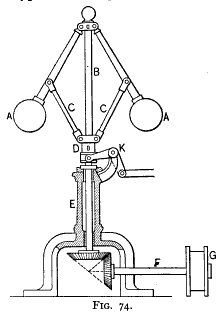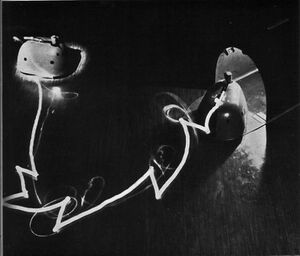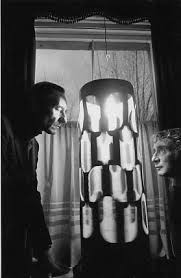Conclusion: The Last Loop de Loop?





Conclusion: The last loop de loop?
What is the fabulous loop de loop?
The loop de loop does more than tail back on itself, like the ouroboros does; nor is it held by gravity, like the loop around Saturn; and the fabulous loop de loop does more than the belt that keeps your pants up.
With each cycle of the loop de loop something is added.
The loop de loop is generative because, with each circuit, it gathers something about itself into its loop, and it gathers information about its relation to its environment so that when it loops around again, there is a difference that makes a difference.
To illustrate this point, this text will read differently as an introduction (before you read The Fabulous Loop de Loop) than as a conclusion (after you have read the The Fabulous Loop de Loop).
We know that the fabulous loop de loop delivers more than the paradox of the ouroboros, we know that the ring of Saturn will one day collapse, even after billions of years of looping. We know that the leather and the buckle will wear over time and one day your trousers will fall around your ankles.
The fabulous loop de loop differs from these other loops because it resists entropy. The fabulous loop de loop organises information in such a way that it can conserve and distribute energy, adapting to the forces that would otherwise deplete and diminish it (but make no mistake, entropy will win in the end).
This text been an examination of the discourse of the loop de loop. Not so much a textual analysis – although, God knows, we have analised some text – as an examination of how the fabulous loop de loop, in its looping, produced a discourse which is itself adaptive and every changing.
We have seen how it has adapted to the specific diversities of its environment. The loop began in the nineteenth century when the discourse of the machine looped into the discourse of evolution. In the twentieth century it became an explanation for how all open systems behave – from small organisms, to ecologies, to human organisations.
There are, broadly speaking, the three loops described in The Fabulous Loop de Loop. Each loop builds on the other. The first loop (chapters one and two) prefigures the cybernetic epistemology and examines instances in which thinkers in the nineteenth century and at the turn of the twentieth century recognized the necessity to think beyond the limitations of the nineteenth century energy model. Back in 1863, Samuel Butler had the foresight to recognise that the adaptability and flexibility of the governor on a steam engine followed the same principle as the adaptability and flexibility of evolution – they were both self-regulating systems which carried news of change through the system, which allowed them to adapt to change. It was Butler who intuited that the line between the organism and its environment was arbitrary and that the essentialist notion of the unity of the “self” was a self-serving illusion. Butler recognised a wholistic system regulated by “vibrations”– messages of difference sent through the system to allow change and adaptation and ensure constancy.
The second loop (chapters three to eleven) examined the social matrix and the de-centred self. This is concerned with how thinkers came to terms with the implications of negative entropy in the cybernetic era and how these new insights necessitated a re-organisation of knowledge across a diverse field. This begins with the proto-cybernetic theories of Kenneth Craik and leads on to how Gregory Bateson applied cybernetic ideas to the fields of anthropology and psychiatry. Bateson, even at the end of his life, was still invoking Butler’s visions, weaving them into the cybernetic innovations of Norbert Wiener and Warren McCulloch (both enthusiastic loop de loopers). He synthesised and recontextualised their thoughts to deliver the message that humans are threatening the very diversity and flexibility that has allowed them to prosper. The role of homeostasis (negative entropy) is then taken up by Lacan who uses the new cybernetic and information theories to articulate a new technical standard for post-Freudian psychoanalysis.
The third loop de loop (chapters twelve to seventeen) loops into the arts, as new models of reflexive practice are suggested by new feedback media. This begins with the plastic diagram designed by Alfred Korzybski (the structural differential) and moves on to the various technologies of self adopted by William Burroughs in his tactical war against media mind control. The logic of self-reflexivity introduced by the fabulous loop de loop finds further expression in the countercultures of the 1960s in which the implications of psychic feedback loops find a new expression. At the end of the 1960s media technologies themselves become therapy. This is also the point where ecological and media theory loop into each other.
What can the fabulous loop de loop teach us?
The loop de loop provides a definition of learning. Any change, any difference, can be understood as evidence that something has been learned. There can, therefore, be non-conscious learning – a thing or a system can learn.
On the human level there is some hope. We can recognise how our context shapes us and change our context (Bateson used the term “deutero-learning”).
There are also reasons to fear the future. We tend to get stuck in loops that affirm our knowledge (which may be flawed) and prejudices (which we are blind to, and which go by the name of ideologies).
This was at least Gregory Bateson’s conclusion who, like an old prophet wagging his beard in the wind to a largely uncomprehending audience, warned that self-knowledge could be double sided.
Bateson, even at the end of his life, speaking to a young audience from the counterculture of the 1960s, invoked Samuel Butler, weaving Butler’s ecological insights into the cybernetic innovations of Norbert Wiener and Warren McCulloch. Bateson synthesised and recontextualised their thoughts to deliver the message that humans are threatening the very diversity and flexibility that has provided their prosperity.
For Bateson, the greatest positive change brought by the loop de loop is the realisation that humans are not at the top of a chain of being and that thinking cannot be divorced from the environment in which thinking takes place. To survive we must acknowledge that we do not think the way we think we think; we must find our place in the ecology of mind which extends beyond the individual and into the organisms and machines that surround us.
This escape is possible, but by no means certain. Because the loop de loop is a negative feedback loop, we do not end where we started, things have change and adapted along the way. We can acknowledge our place in the ecology of mind (which is the privilege of the loop de loop) or we can carry on regardless. If we do the latter, this might be our last loop de loop…